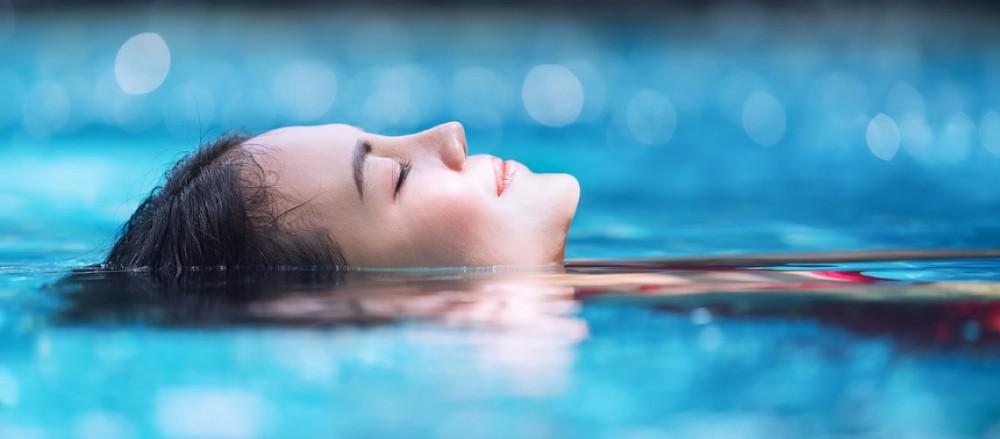History of hydrotherapy
Hydrotherapy comes from the Greek terms hydro, meaning water, and therapeia, meaning therapy. Its first use dates back to 1500BC when Hindus used water to treat fever. Around 500BC, its use was further progressed when the Greeks and Romans used baths for health, hygiene and recreational purposes. Hydrotherapy use decreased after the fall of the Roman Empire and the use of public baths was banned. It was then re-established in the 17thcentury. However, it wasn’t until 1920, when the Hubbard Tank was invented, that the use of therapeutic pool exercises really took off.
Why is hydrotherapy good for me if I have an injury?
It’s a brilliant method of treatment for those with injuries. It helps to relieve stress on the joints by decreasing joint compression forces (as there is less gravitational force doing exercises in water as opposed to doing them on land). In addition to this, it helps to reduce any swelling around the injured area. It also means that any early range of movement exercises can be carried out in a supportive environment and is therefore fantastic for injuries that have affected someone’s ability to walk.

It helps to improve the range of motion and flexibility, and the benefits can really be felt. In addition, it allows exercise to be undertaken without pain and has even been found to decrease pain and muscle spasm after rehabilitation sessions. It has also been found to improve balance, coordination, and proprioception, all of which are aspects that are integral to avoiding re-injury. Through the use of hydrotherapy, patients can go back to doing land-based activities sooner, so it really does bridge the stage of being able to do very little to do so much more.
The main benefit of hydrotherapy from my own personal practice of this method is the psychological impact it has on patients. It really does help people to feel more confident about coping with their injury and patients are less afraid of re-injury during rehabilitation sessions when they are in the water.
What type of injuries is hydrotherapy good for?
Hydrotherapy is an excellent therapeutic treatment for many different types of injuries including muscle or ligament injuries, broken limbs, spinal cord injury, and any number of sprains and strains.
What other conditions can hydrotherapy help to treat?
-Patients with chronic pain conditions including fibromyalgia and musculoskeletal conditions can be helped greatly by hydrotherapy. This is because the treatment encourages normal movement and increases muscle length, strength and control. It is also good for chronic back pain.
-Hydrotherapy is also useful in sufferers of various types of neurological conditions, and enables them to perform movements that would not otherwise be possible on dry land.
-Patients with respiratory or cardiovascular conditions also benefit from hydrotherapy, for rehabilitation in heart failure for example, and for enhancing endurance.
-Osteoarthritis and rheumatoid arthritis are two debilitating conditions that hydrotherapy can help to treat.
-Following back, abdominal or lower limb surgery, mobility becomes difficult and painful, and it is not possible to weight-bear fully. Hydrotherapy helps by increasing the movement of joints and improving muscle strength. Knee or hip replacement and anterior cruciate ligament surgery are examples of the many types of surgical procedures after which patients can benefit from hydrotherapy.
-Athletes also often use hydrotherapy to improve or maintain their health, and not necessarily because of a specific injury.
-Hydrotherapy can also greatly benefit people with anxiety, depression and high blood pressure. It can also improve circulation.
What is it like to have a hydrotherapy session?
Hydrotherapy is essentially physiotherapy in a pool. During a session, you will be moving and exercising in water, which can be very freeing and enjoyable for people with debilitating injuries and conditions who would not be able to perform these movements on dry land. It is a whole-body therapy and as such, can also contribute to general health and wellbeing. Although a normal swimming pool can be used, hydrotherapy pools are different as the temperature, pressure and movement of the water are controlled according to who is in the pool and for what purpose.
For more information about Hydrotherapy
This article was written by our team of specialist therapists at Perfect Balance Clinic. If you would like more specific advice about how our team can help you with this condition or symptoms you may be having, please complete the contact form below and one of the team will get back to you shortly.







